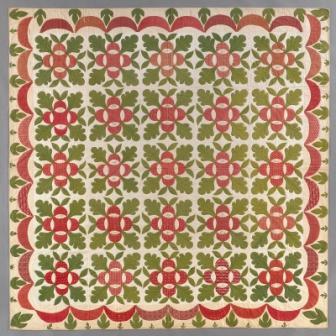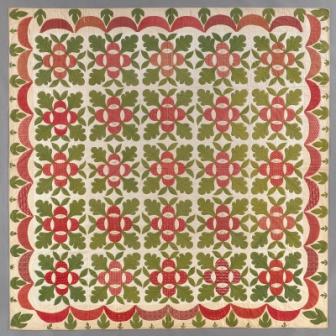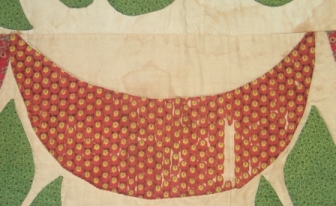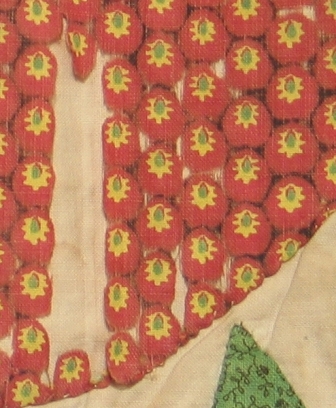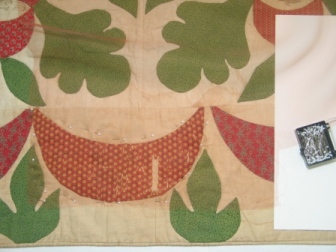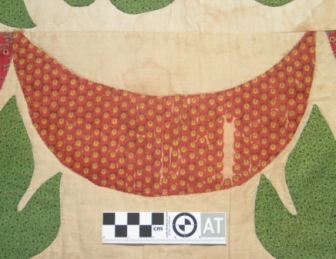This brightly appliquéd red and green quilt looks great from a distance, but up close its age is showing. The iron component of the black dye, used to create fine lines in a few of the red appliqués, has weakened the cotton fabric. The red sections have literally perforated and split—or, even worse, fallen out. This damage is no one’s fault. Conservators have a fancy word for it: inherent vice. Luckily for us, not all black dyes contain iron. The artfully inked signatures on the quilt have survived intact.
What to do about the damaged appliqués? LACMA Textile Conservator Susan Schmalz chose to stabilize the damages, but left them visible. It takes a sharp eye to see her handiwork. A sheer polyester fabric was cut (or rather melted) using a pyrograph, to the shape of an individual appliqué. Using a surgeon’s fine intestinal curved needle, the sheer fabric was stitched on top with stitches measuring only 1mm long.
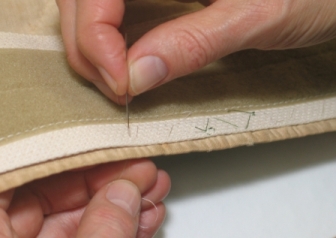
Applying Velcro. Changing the thread to match the fabric on the front makes the stitches nearly invisible.
If it weren’t for the damaging black ink, the quilt would be given a clean bill of health. The other cotton fabrics are sturdy, permitting hanging with Velcro stitched across the top back edge. The hand stitching on the back is made nearly invisible by changing the thread color to match the appliqué on the front.
The quilt was installed last week in the American galleries on the third floor of the Art of the Americas Building. It is safe to say that bits of the quilt will not be littering the bottom of the case.



